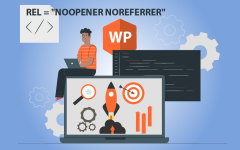
Increasing ROAS by moving to a new keyword matching strategy
About the client and their goals
Our client is a major entertainment center in New York. The company is considered to be a fairly experienced market participant, but wants to expand its base of regular customers in New York and New Jersey. The main purpose of the website is to sell tickets, book private events, and to book corporate meetings and team building events.
Prior to the company’s collaboration with Clever Solution, a Google advertising campaign had been conducted for about two years.
Our set goals for working with this project included:
- Bring conversion traffic to the site;
- Run high CTR ads that catch the eye of potential customers and become an integral part of the sales chain.
- Achieve the optimal click price, and reduce the cost of attracting single visitors;
- Brand awareness;
- Achieving a ROAS of 3-4, compared to the previous indicators of 1-2 (our main goal).
Project Work Process
- We began by selecting keywords using the following sources:
- added keywords of previous contractors;
- Google Ads broad search ad data
- Google Ads Keyword Planner
- We clustered queries by key groups. When cleaning, all unnecessary keywords were added to a list of negative keywords.
- Display Ads were configured for these types:
- keyword targeting
- affinity audiences according to Google
- topics of our target audience;
- URL sites on similar subjects
- manually selected popular placements.
- retargets and similar audiences
- We created new attractive ads containing keywords for each corresponding group.
While we were in the process, the client changed the site and conducted a complete rebranding. This left us with the task of setting ecommerce and goals on the new site, so we could track which keywords led to purchases and actions.
To make this setup even more complex, the purchase process was provided by a third-party service, meaning that the ticket purchase basket was located on a separate site and basically worked in an iframe. To redistribute the source data in the iframe, we first set up cross-domain tracking, and then proceeded with ecommerce and all necessary goals.
After testing various tactics, we noted that the state of the campaigns had improved, the CPC decreased, the CTR increased, but the ROAS remained at level 2. We reviewed all search queries for the year’s advertising campaigns and arrived at the conclusion that most ticket purchases were made using the same keywords.
We therefore decided to focus on the keywords that brought purchases.
With that in mind, we switched to a new type of search campaign for exact match keywords with manual bidding.
To improve brand recognition and reach new audiences, we decided to use only Display Ads.
Work results
We conducted weekly reporting and noted a positive increase in indicators after switching to this strategy:
- CTR increase
- +258.07% entire account
- +55.49% search campaigns
- +286.50% display campaigns
- CPC reduction
- -51.57% entire account
- -47.27% search campaigns
- -6.79% display campaigns
- Conversion value per cost (ROAS) increase
+168.72%
- Conversion value
+22.39%
 Conclusion
Conclusion
Every business needs its own unique approach to Google advertising. It is necessary to test various tactics for combining keywords, their match types, bidding strategies, locations, and other factors. The next step in working with this project, once the statistics on conversions have accumulated, will be the transition to a Maximum Conversions and Target CPA strategy. We hope to achieve even better results in terms of ROAS and Conversion value.
















